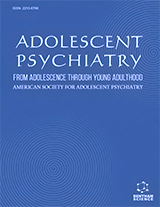Abstract
This chapter describes hematopoietic stem cells and their therapeutic uses to cure otherwise lethal, malignant and non-malignant diseases. Here we analyze the biological characteristics of different hematopoietic stem cell sources and how they are mobilized, collected, selected from the patient himself for autologous transplantation, or from matched or mismatched, related or unrelated donors for allogeneic transplantation [1 - 3]. Hematopoietic stem cell transplantation has been implemented for decades and has undergone many improvements over the years [3]. Today it is a safe, feasible option for selected patients and it still remains the only cure for a wide range of malignancies or non-malignant diseases despite advances in understanding disease genetics and biology. Moreover, with improvements in conditioning regimens and graft manipulation [2, 4], cells can be transplanted to enhance immune reconstitution and reduce relapse, which are the most common cause of transplant failure [2, 4]. Given the immunological modulation and anti-leukemic effect of these cells, conditioning regimen can be reduced and transplantation is now extended to elderly patients who are more susceptible to drug toxicity.
Keywords: Autoimmune diseases, Hematological diseases, Immunology, Solid tumors, Stem cell transplantation, Stem cells.






















